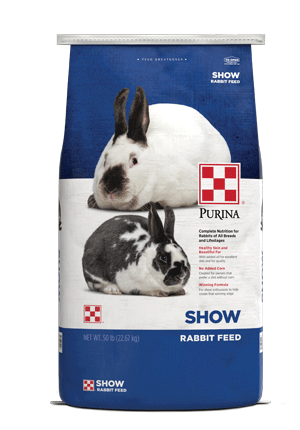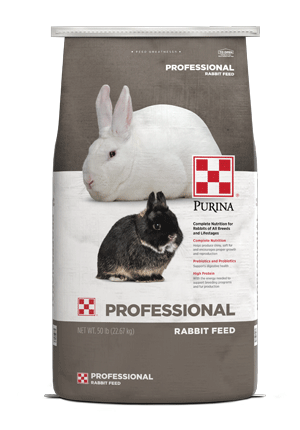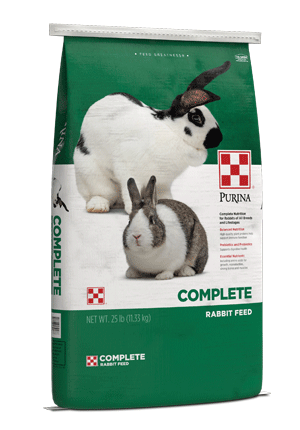
Rabbit Kindling and Rabbit Weaning
Wellness : Health

Your rabbit doe is pregnant and will soon give birth, or “kindle.”
What do you need prior to your rabbit kindling? How can you best help her?
Nest box
Does that are soon to kindle will need a nest box in their cage. The ideal nest box is one that is built into the floor of the cage and hangs below the floor. If a baby bunny (kit) should bounce out, he will be able to find his way back in very easily — much more so than if he has to navigate the wall of a standing nest box. But regardless of location, the nest box should be large enough to accommodate the doe and her litter, and it should be made of a material that is not easily chewed but is easily sanitized.
Bedding material
The doe will need a form of bedding to mix her own fur with to make a cozy, warm nest. Shavings, especially fine ones, should be used only in the very bottom layer, if at all, as they can clog eyes and noses of delicate kits. It is much better to use some clean straw or hay and let the doe arrange it to her liking. She will pull her own fur to use for additional bedding. This is completely normal, even though it may leave her a bit ratty looking.
Nursing
Kits are born naked and helpless, but will begin to grow fur and develop rapidly. Does nurse their kits only once or twice a day, so if you never see the doe in with the kits, do not automatically assume that they are being neglected. Chances are they are just fine and being fed when there are no snooping humans around. Does are very vigilant and will spend most of their time outside the nest box, standing guard, just as they do in the wild. The kits will be warm and cozy in their nest of bedding and Mama’s fur.
Unusual behavior
Occasionally, incidents happen that are often blamed on “bad mothering skills,” but are often the result of stress and/or inexperience. A first-time mother may accidentally bite into the belly of a kit while removing the umbilical cord, or cause other damage trying to pull the kit from her vagina using her teeth. These incidents usually do not happen after the first litter. Stomping on kits is often a result of the doe jumping at an unusual sound, and she may “thump” to warn others, which can be dangerous for her kits within the confines of the nest box. A doe may also urinate on her kits to camouflage them if she thinks a predator is lurking. Does exhibiting such behavior should be moved to a quieter, more secure location where they will not be stressed into dangerous behavior. Does may also become aggressive toward their caretaker at this time, as they are in a very protective mode. Simply perform any necessary tasks quickly and quietly and leave the doe to do her job.
With a little care, common sense and self-restraint (because those kits just look so darn cute and you just want to carry them around and cuddle them, which is not in their best interest), you can raise a litter of healthy, happy rabbits.
What do you need prior to your rabbit kindling? How can you best help her?
Nest box
Does that are soon to kindle will need a nest box in their cage. The ideal nest box is one that is built into the floor of the cage and hangs below the floor. If a baby bunny (kit) should bounce out, he will be able to find his way back in very easily — much more so than if he has to navigate the wall of a standing nest box. But regardless of location, the nest box should be large enough to accommodate the doe and her litter, and it should be made of a material that is not easily chewed but is easily sanitized.
Bedding material
The doe will need a form of bedding to mix her own fur with to make a cozy, warm nest. Shavings, especially fine ones, should be used only in the very bottom layer, if at all, as they can clog eyes and noses of delicate kits. It is much better to use some clean straw or hay and let the doe arrange it to her liking. She will pull her own fur to use for additional bedding. This is completely normal, even though it may leave her a bit ratty looking.
Nursing
Kits are born naked and helpless, but will begin to grow fur and develop rapidly. Does nurse their kits only once or twice a day, so if you never see the doe in with the kits, do not automatically assume that they are being neglected. Chances are they are just fine and being fed when there are no snooping humans around. Does are very vigilant and will spend most of their time outside the nest box, standing guard, just as they do in the wild. The kits will be warm and cozy in their nest of bedding and Mama’s fur.
Unusual behavior
Occasionally, incidents happen that are often blamed on “bad mothering skills,” but are often the result of stress and/or inexperience. A first-time mother may accidentally bite into the belly of a kit while removing the umbilical cord, or cause other damage trying to pull the kit from her vagina using her teeth. These incidents usually do not happen after the first litter. Stomping on kits is often a result of the doe jumping at an unusual sound, and she may “thump” to warn others, which can be dangerous for her kits within the confines of the nest box. A doe may also urinate on her kits to camouflage them if she thinks a predator is lurking. Does exhibiting such behavior should be moved to a quieter, more secure location where they will not be stressed into dangerous behavior. Does may also become aggressive toward their caretaker at this time, as they are in a very protective mode. Simply perform any necessary tasks quickly and quietly and leave the doe to do her job.
Rabbit weaning
Eventually the kits will open their eyes, become active and grow like little weeds. Unless you are a professional and very experienced rabbit breeder, you should plan on leaving the kits with the doe until 8 weeks of age. During this growth period, the kits have been drinking mother’s milk, but also eating a high-quality rabbit feed, the same provided to their mother. When it comes time to wean them, simply remove the doe from the cage. Leaving the kits in their familiar cage, which still has the doe’s scent, and has their feeder full of familiar food, is the least stressful way to help kits through this very difficult adjustment period. This is a very common time for bunnies to develop enteritis, so the fewer changes that are made, the better. This is NOT the time to be changing their location or their food!With a little care, common sense and self-restraint (because those kits just look so darn cute and you just want to carry them around and cuddle them, which is not in their best interest), you can raise a litter of healthy, happy rabbits.



